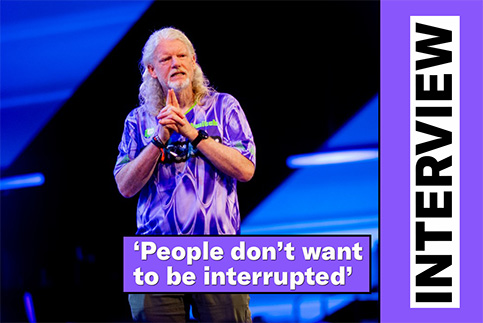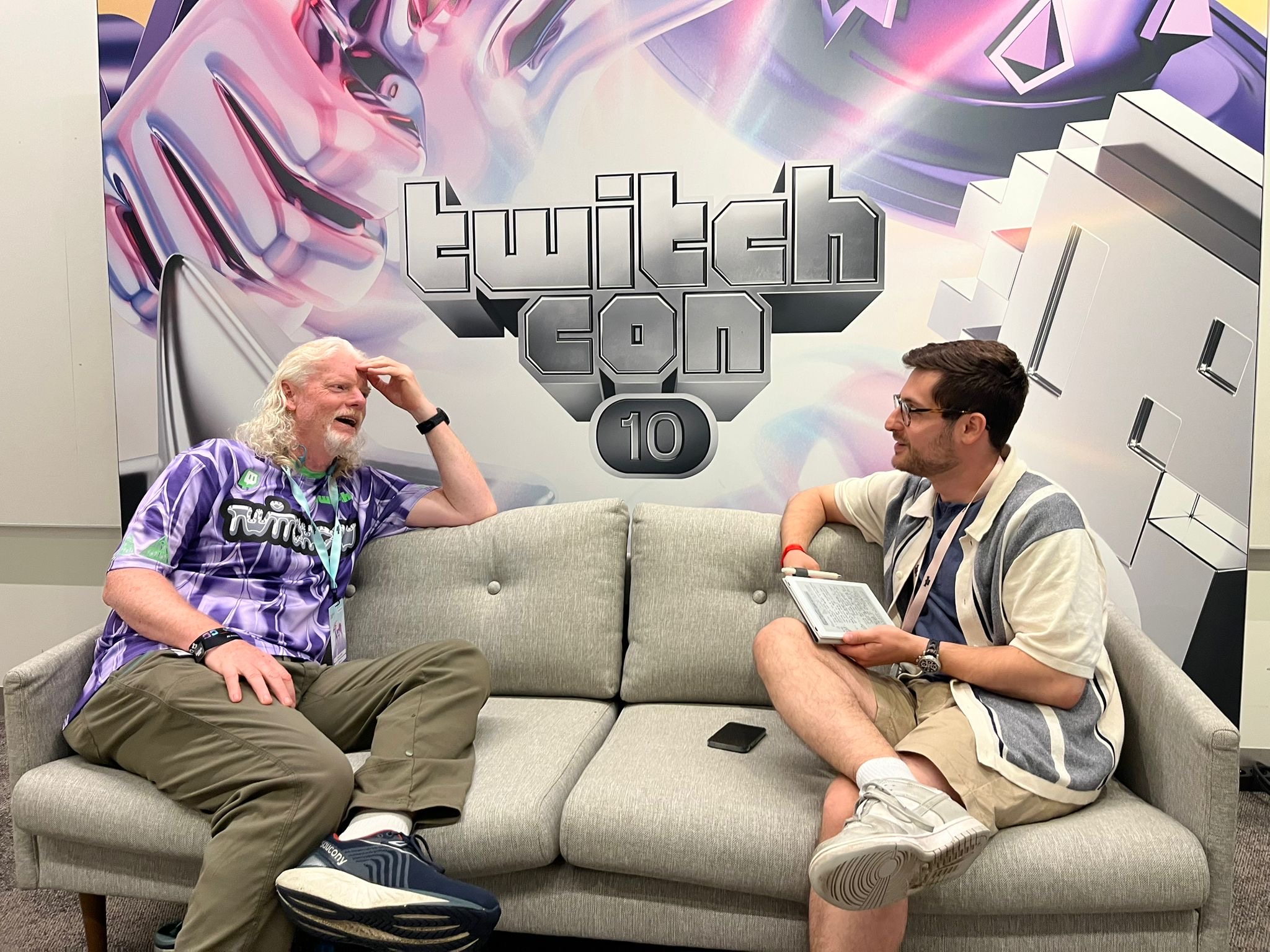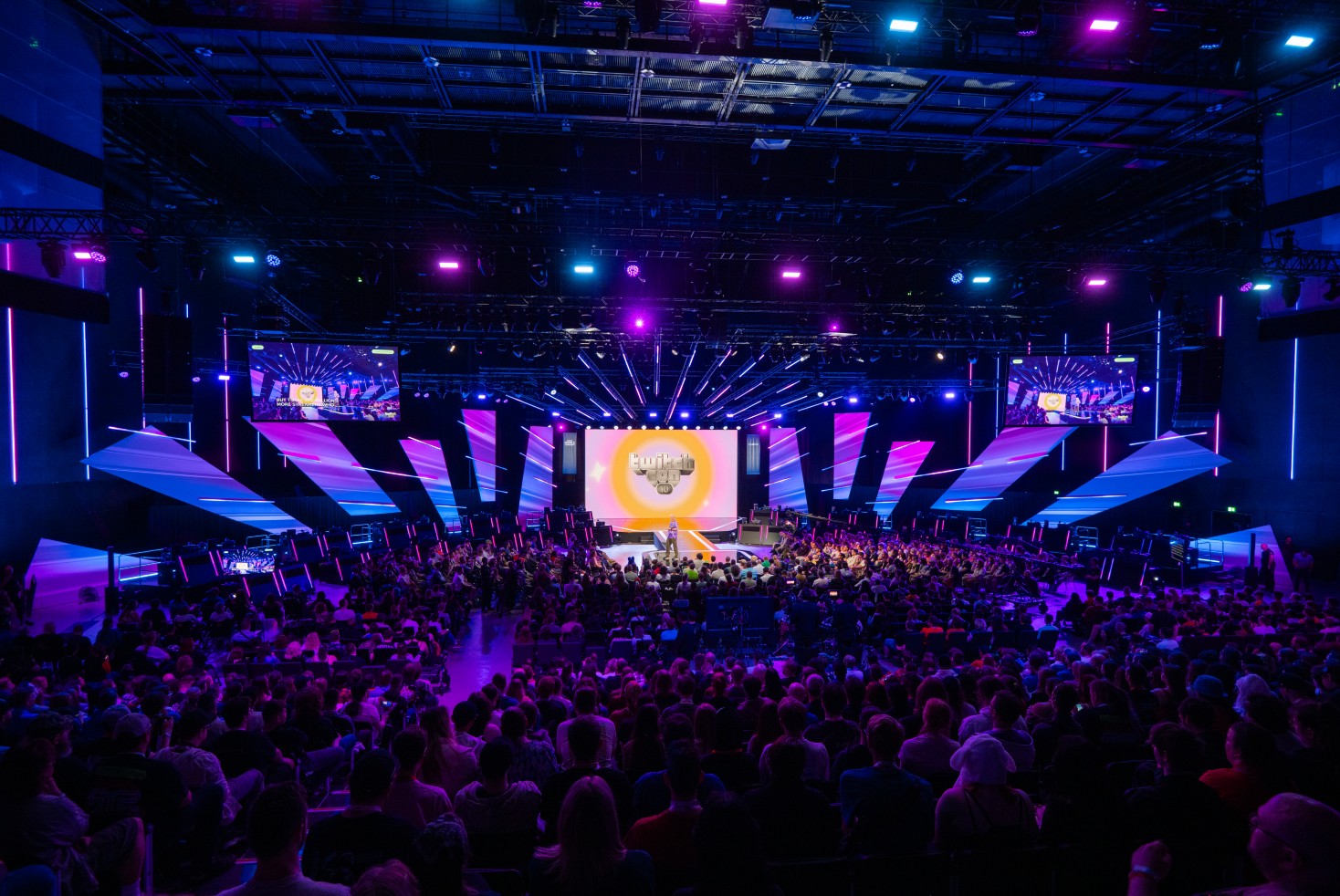Twitch CEO Dan Clancy: Why brands should reach ‘entertainers who happen to game’

The Media Leader Interview | TwitchCon Europe 2025
Twitch CEO Dan Clancy discusses how the popular streaming platform wants to grow its ads business while maintaining a quality user experience — and how brands can embrace going live.
There aren’t too many places online where “everybody knows your name”, to borrow from Cheers. And while it may not be true that every single user on Twitch knows one another, CEO Dan Clancy nonetheless believes the same spirit of community channelled via the sitcom’s bar is alive and well on the live-streaming platform.
“Swiping on your phone in social networking isn’t social — it’s antisocial,” he tells The Media Leader amid a bustling TwitchCon in Rotterdam. “I do think there’s something different here on Twitch.
“My hypothesis is: Twitch is based on synchronous interaction. As humans, we build community through in-person, synchronous interaction. A lot of online engagement is asynchronous.”
Clancy agrees that the development of social media has led to a “less connected” society, but sees Twitch as a way to make up for the interpersonal signal loss.
“When you walk around TwitchCon, you see lots of people that actually don’t get out as much. They don’t have that sense of belonging and connection, so they find it online. We provide that service. And then often that online connection translates into offline, into a real-world connection.”
‘Cozy corner’ online and offline
TwitchCon celebrated its 10th anniversary last month. The Rotterdam Ahoy was packed with creators and fans of all types, with booths on its ground floor hosting a diversity of interests. These include playing video games like Elden Ring Nightreign and Minecraft, board and card games such as chess and Magic: The Gathering, creating live music and visual art, playing with Lego and reading manga.
A large number of attendees are live-streaming their own experience at the event to thousands of fans; The Media Leader sees more gimbals in a 1km radius than it had ever seen before. There are cosplays and winged eyeliner galore. There is a sign outside ushering attendees towards the “Cosplay Weapons Check-In”.
TwitchCon offers an opportunity for online communities to meet in person and Clancy also uses the conference to make a slew of announcements of quality-of-life improvements for streamers and moderators.

The platform’s capacity to foster close-knit community-building is something that Clancy warns the media industry takes for granted.
“I think lots of folks use the word ‘community’ online and it’s not really a community,” he says. “I used to be at YouTube — I would use the word ‘community’ all the time. YouTube isn’t a community, even though I said it back then.
“It’s a word we just throw around. But if you think of it in your real life, whether it’s a church or a running club or a group of friends from college, that’s not people leaving comments on a YouTube video.”
Clancy proudly declares the “foundation” of Twitch’s community is its safety tools, designed first and foremost to “protect the streamer and platform”, but which also protect brands wanting to advertise. The platform uses a mix of machine learning and human moderation to handle the uncertainties native to live streaming and individual streamers can employ moderators for their streams.
According to Andrea Garabedian, global director of Twitch’s brand partnership studio at Amazon Ads, Twitch’s care towards user (and, by extension, brand) safety allows the platform to act as a “cozy corner”.
She explains to a group of marketers ahead of TwitchCon that “ad monetisation is a privilege, not a right” on Twitch and that “viewership and discovery are earned”.
Moving down the funnel
A self-described “problem-solver”, Clancy has taken an unorthodox career path to Twitch.
From 1998 to 2005, he worked in various positions at Nasa, including as chief of the computational sciences division. After that, he joined Google, working across Google Books search, search and YouTube until 2014. Following a four-year stint at Glassdoor, Clancy joined Twitch in 2019 as vice-president of its creator and community experience. He was named CEO in 2023, succeeding co-founder Emmett Shear.
In conversation with The Media Leader, he is relaxed in streetwear and exudes an easy confidence discussing the company’s commercial strategy. His long blonde-white hair (he grew it out during the Covid-19 pandemic and has kept it ever since) and informal speaking style will likely be the envy of other tech leaders, who have made explicit attempts at personal rebrands to improve their public appeal.
Clancy explains that currently two-thirds of Twitch’s revenue comes from subscriptions, compared with one-third from advertising — a figure Clancy notes “a lot of people are surprised by”, given most platforms are heavily reliant on ad revenue. It’s doubly surprising to critics, he implies, given that users don’t pay for subscriptions to access content.
“They’re paying for patronage and status and reward in the community,” he explains. “Often, when I talk to brands, I say that’s an indication of their emotional connection to the streamers and what they’re watching.”

Communicating that “emotional transference”, as Clancy describes it, has led to increased conversations with advertisers in recent years. He expects ad revenue to increase at a faster rate of growth than subscription revenue, with advertising eventually accounting for half of total revenue.
While Twitch has generally been marketed as an upper-funnel play for brands to develop positive associations with hard-to-reach gaming communities, the platform is increasingly looking to develop its mid- and lower-funnel options to bring more advertisers into the fold. Ahead of TwitchCon, parent Amazon Ads announced a slew of new sponsorship solutions aimed at making it easier for brands to collaborate with streamers.
“That’s one of the benefits of being with Amazon,” says Clancy. “Amazon can use your shopping history, all sorts of information, to make sure we find the right ad for you.”
Krishan Patel, managing director, agency and EMEA business development, at Amazon Ads, tells The Media Leader that Amazon views Twitch as “very complementary to our other ad solutions” as part of its wider full-funnel offering.
Patel, who previously ran Twitch’s EMEA ads business, explains that Twitch can be used to deliver brands incremental reach on top of Prime Video. Meanwhile, Twitch’s integration with Amazon’s demand-side platform allows advertisers to track business outcomes, such as retail sales, across the funnel.
“While Prime Video ads can help brands reach audiences at scale alongside rich premium content, Twitch enables brands to reach highly engaged audiences and interact with them in real time — especially Gen Z adults and young millennials,” he says.
According to Clancy, there are active efforts to develop more performance-based tools on Twitch. One new format in the works is a “companion vertical video ad next to the [live stream]”; the idea being to let small and medium-sized businesses repurpose short-form video ads they have made for other social platforms.
Currently, apart from branded sponsorships with creators, most Twitch ads are pre- or mid-roll that interrupt the live stream. But Clancy admits such ads “are not necessarily always the right point of engagement for lower funnel”.
Still, he is vociferously interested in protecting the user experience, even as advertising becomes more commonplace on Twitch.
“Anyone who says that they just like ads…” he shakes his head. “I remember at YouTube, our vision was ‘ads are content and people will love ads just as much as our content’. The guy who was running our ads team fully believed that. I don’t think [they] understand… But they serve a purpose.
“People don’t want to be interrupted,” Clancy continues. For users who prefer not to see ads, Twitch has a paid-for premium service, Turbo. But, he acknowledges, a lot of effort is going into “trying to create [ad formats] where it’s not interruptive”.
Beyond gaming
As Twitch endeavours to adapt its revenue model to be more advertising-heavy, the brand itself is undergoing a tricky evolution. What started as a spin-off of Justin.tv — a live-streaming service for more general topics — developed to focus on gaming and now finds itself pigeonholed by advertisers.
Chief marketing officer Rachel Delphin tells The Media Leader that Twitch is “already there” in moving beyond gaming, but admits “a lot of brands come to us with the intention of reaching the gamer demographic”. That’s not necessarily a disadvantage given the number of brands seeking such audiences “has really exploded over the past few years”, but nevertheless a frustration for a platform that sees its appeal as wider-ranging.
According to internal figures shared with marketers ahead of TwitchCon, the platform counts 258m average hours of non-gaming content watched by users monthly. But Delphin admits Twitch can be daunting to new users who are unfamiliar with its features and lingo (some examples: “poggers”, “kappa”, “kekw”).
“I think if you just went to Twitch and you’d never heard anything about it, you might find yourself like you’ve been dropped in Times Square — slightly bewildered but completely charmed,” she says. Clancy agrees that not enough ad buyers “understand Twitch and live [streaming]” because they aren’t users themselves.
Clancy, for his part, prefers to call Twitch streamers not “gamers” but “entertainers who happen to game”. He acknowledges that Twitch leaders can sometimes accidentally reinforce a one-dimensional view of creators on the platform, but he argues that brands should not look to target “gamer” audiences because more than half of young people game regularly and it’s not necessarily their “gaming characteristic” that brands want to speak to.
“We have streamers of all type,” he tells The Media Leader, pointing to figures like internet personality Kai Cenat and rapper Lizzo, who both stream regularly. Clancy himself streams several times a month, using it to play music, explore global cities and enjoy water parks, among other activities.
“We want anybody that has a creative instinct to be able to create on Twitch,” he says. “It’s not that we don’t love all the gaming stuff, but I think the need for community is universal.
“There’s a ton of untapped potential… More and more, it’s going to be people living their lives. It’s kind of full circle from where Justin.tv started.”
The challenge is that new-to-Twitch creators and brands often lack an understanding of how to take advantage of the unique aspects of live streaming. According to Clancy, people often try to translate what they did on another platform in the Twitch environment and it fails. In contrast, Lizzo, for example, succeeds by focusing her streams around hanging out backstage and chatting with her fans rather than merely recording musical performances.
“People don’t come to [Twitch] to watch Lizzo do a song — they could watch a YouTube video of Lizzo doing a song,” Clancy points out.
Embracing synergies with other platforms
Unlike other scaled social platforms, most of which poach ideas from one another and want to be “everything apps“, Twitch leadership is generally content to keep the business focused on what makes it special, even if it means needing to work synergistically with competitors.
“We want [streamers] to be able to build community off of Twitch,” says Delphin.
Twitch streamers, for example, often look to grow their followings on Instagram, TikTok and YouTube, and Twitch makes it easy for them and their followers to clip parts of their streams to post elsewhere. Discord, in particular, is highly “synergistic” with Twitch creators, according to Clancy, as it provides group messaging tools for creators to speak to their communities off platform.
But he dismisses the idea that Twitch could itself try to develop more Discord-like features to siphon users there, suggesting it would be a waste of resource. M&A is similarly not a consideration.
“If we tried to replace Discord, we would fail,” he admits. “And it’s important to understand why: people build communities; a lot of gamers use Discord and you can’t just break those communities into just the ones on Twitch. Gamers use Discord to hang out with their friends.”
Similarly, Clancy is first to acknowledge Twitch is “not going to out-TikTok TikTok”.

He continues: “One of the mistakes that tech platforms have is this idea that people want one app to do everything. People don’t want one app to do everything — people want a good app to do this and another good app to do that. I would love for everyone to use Twitch for everything. I’d love people to start using Twitch when they want to search the web — that would be a really good business. But I think I would fail if I tried to compete with Google, so that’s silly.”
That hasn’t stopped Google from wanting to compete with Twitch. YouTube has had live-streaming capabilities since 2011 and, in recent years, has sought to entice top creators away from Twitch through financial incentives.
But Clancy dismisses YouTube as a direct competitor. “YouTube is designed — and I was there when they were making these decisions — where the foundation is related videos,” he says. “As soon as your attention fades, you get something else. And of course TikTok does that even better — your attention fades and you swipe.
“You’re programmed to jump to the next thing on those platforms. That means you don’t stay a while.
“And the thing that creates community on Twitch is that people are staying.”
The Media Leader was invited to attend TwitchCon by Twitch




